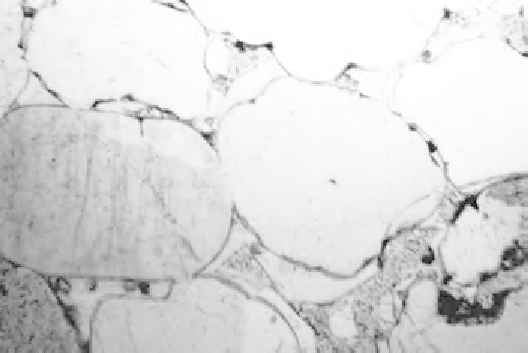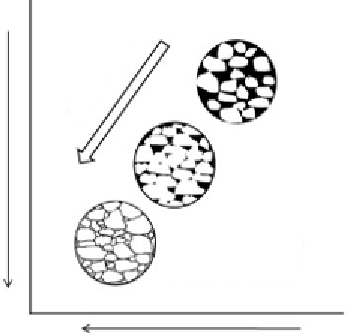Geology Reference
In-Depth Information
Figure 5.7
Compaction and
cementation of
granular soils with
burial leading to
increased strength,
reduced
deformability and
Loose sand with
tangential contacts
Burial
depth
Compacted, long contacts,
some interpenetration and
authigenic cement
Sutured contacts, strong
pressure solution bonds
and secondary cement
0
%
35
%
Decreasing porosity
flattened surfaces where in contact, with some pressure solution, plus authigenic cementation of
grains by silica and iron oxides. As a result of these diagenetic processes, the material has been turned
from loose sand into a strong rock. Triassic Sandstone, UK. Large grains about 5mm in diameter.
often departures from this behaviour in natural sediment piles, due
largely to cementation (Skempton, 1970; Hoshino, 1993). The changes
in property (especially strength and deformability) that ensue from
burial, compaction and consolidation are discussed in Section 5.5. At
some locations, the upper part of the sediment pile is considerably
stronger than might be anticipated from its shallow burial level because
it has become desiccated on temporary exposure above water level.
Where soils are uplifted and upper levels eroded, or otherwise loaded,
and then that load removed (e.g. by the melting of a glacier), then the
strength and stiffness will be relatively high and the soil is termed


